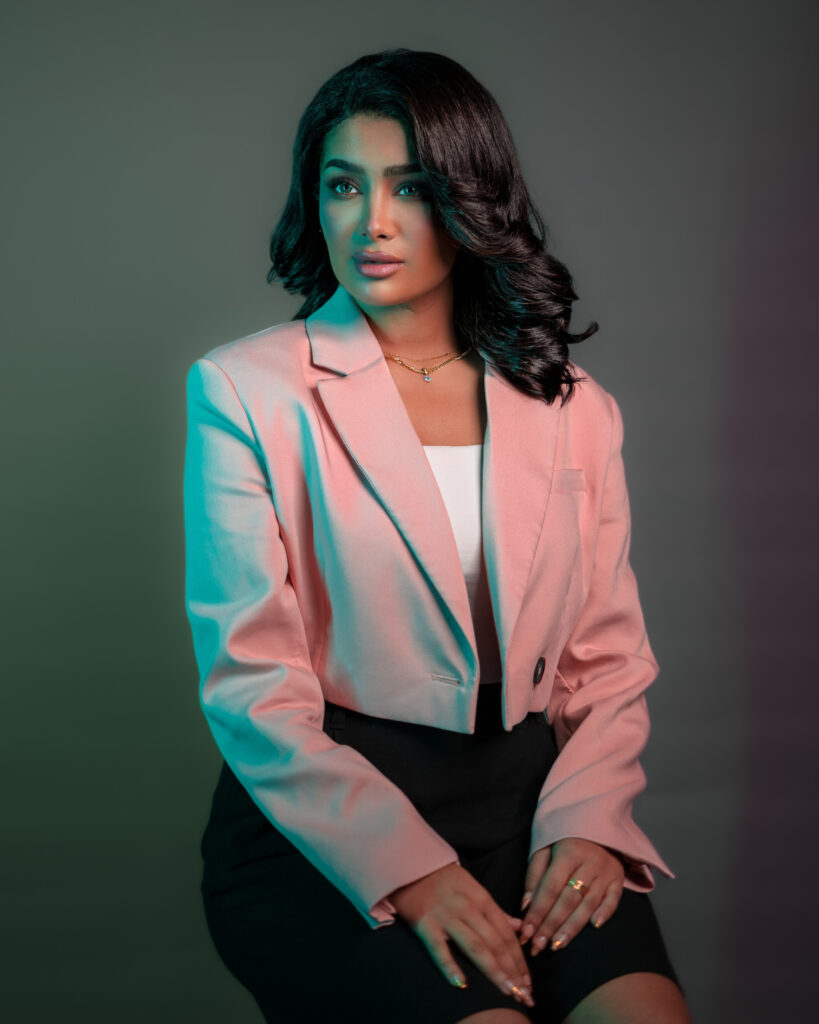Are you tired of searching for the perfect blush color to enhance your natural beauty? Look no further! In this article, you will discover the ultimate guide on how to choose the right blush color for your specific skin tone. Whether you have fair, medium, or deep skin, we’ve got you covered with expert tips and tricks that will leave you looking radiant and effortlessly flawless. Say goodbye to guesswork and hello to a perfectly flushed complexion that complements your unique beauty. Get ready to unlock the secret to choosing the blush color that will make you glow from within!

This image is property of images.pexels.com.
Understanding Your Skin Tone
Understanding your skin tone is essential when it comes to choosing the right blush color. Skin tone refers to the surface color of your skin, while undertone refers to the underlying hue that can be cool, warm, or neutral. Determining both your undertone and skin tone will help you find a blush shade that complements your complexion seamlessly.
Determining Your Undertone
To identify your undertone, there are a few simple tests you can try. The first test involves looking at the veins on your wrist. If your veins appear bluish or purple, you likely have cool undertones. If they appear greenish, you may have warm undertones. If you can’t clearly determine the color, you might have a neutral undertone.
Another method is to observe how your skin reacts to the sun. If your skin burns easily and rarely tans, you probably have cool undertones. On the other hand, if your skin readily tans and rarely burns, you likely have warm undertones. If your skin burns but eventually tans, you might have a neutral undertone.
Identifying Your Skin Tone
Identifying your skin tone is the next step in choosing the right blush color. Skin tones can range from fair to deep, and understanding your intensity will guide you in selecting the most flattering hue. It’s important to note that undertone and skin tone are independent of each other. You can have warm undertones and fair skin or cool undertones and deep skin.
Now that you have a better understanding of your undertone and skin tone, let’s dive into the specific blush colors that work best for each undertone.
Choosing the Right Blush for Warm Undertones
If you have warm undertones, you’ll want to opt for blush shades that enhance your natural warmth. Warm undertones typically have a yellow or golden cast, so choosing blush colors that have peachy or coral tones will complement your complexion beautifully.
Peachy and Coral Shades
Peachy and coral blush shades add a lovely warmth to your cheeks, creating a healthy and radiant glow. These shades work well for both fair and deep skin tones with warm undertones. For fair skin, opt for lighter peachy shades, while deeper skin tones can go for deeper and more vibrant corals.
Bronze and Terracotta Colors
Another excellent option for warm undertones is to choose blushes with bronze or terracotta undertones. These shades add depth and richness to your cheeks, perfect for achieving a sun-kissed look. Bronze blushes work well for medium to deep skin tones, while terracotta shades complement fair to medium skin tones with warm undertones.

This image is property of images.pexels.com.
Selecting Blush for Cool Undertones
If you have cool undertones, blush shades with cool tones will enhance your complexion and provide a natural-looking flush of color. Cool undertones often have a pink or blue cast, so choosing blush colors with rosy or pink tones will best complement your skin tone.
Rosy and Pink Tones
Blush shades with rosy and pink undertones are fantastic choices for cool undertones. These shades mimic the natural flush of a cool-toned complexion, giving a fresh and youthful appearance. Fair to deep skin tones with cool undertones can choose from a range of pink shades, from soft baby pink to deeper rosy hues.
Plum and Berry Shades
For a more dramatic look, consider blushes with plum or berry undertones. These shades lend a captivating touch to cool undertones, adding depth and intensity. Light to deep skin tones with cool undertones can experiment with various shades of plum and berry to find the perfect balance between subtlety and richness.
Exploring Blush Options for Neutral Undertones
If you have neutral undertones, you have the flexibility to experiment with a wide range of blush colors. With neutral undertones, both warm and cool blush shades can work well, depending on your personal preference.
Mauve and Dusty Rose Hues
Mauve and dusty rose blush shades are excellent choices for neutral undertones. These shades offer a soft and natural-looking flush, enhancing your complexion without overpowering it. Whether you have fair or deep skin tones with neutral undertones, mauve and dusty rose hues are versatile options.
Soft Peach and Apricot Colors
Blush shades with soft peach and apricot undertones are also suitable for neutral undertones. These colors add warmth and radiance to your cheeks without skewing too warm or cool. Fair to medium skin tones with neutral undertones can benefit from the subtle vibrancy of soft peach and apricot blush shades.

This image is property of images.pexels.com.
Considering Your Skin Tone Intensity
Once you have determined your undertone and identified your specific skin tone, considering the intensity of your complexion is crucial in choosing the perfect blush color. Skin tone intensity refers to how fair or deep your skin is, and it can affect how a particular blush shade appears on your cheeks.
Fair Skin with Light Intensity
For fair skin with light intensity, it’s essential to choose blush shades that add a natural-looking flush without overpowering your complexion. Light pink, soft peach, and dusty rose hues work well for fair skin tones, providing a delicate touch of color.
Medium Skin with Moderate Intensity
Medium skin tones with moderate intensity can experiment with a broader range of blush shades. Rose, coral, and berry tones offer versatility and allow you to create various looks, from soft and natural to vibrant and bold.
Deep Skin with Rich Intensity
Deep skin tones with rich intensity can pull off deeper and more intense blush shades. Plum, terracotta, and bronze hues add warmth and dimension to your complexion, making a statement and creating a stunning contrast.
Complementing Your Blush Color with Eye and Lip Makeup
When choosing a blush color, it’s important to consider how it will harmonize with your eye and lip makeup. Selecting complementary shades will create a cohesive and balanced look.
Coordinating with Eye Shadows
If you opt for a warm blush color, consider pairing it with eye shadows in similar warm undertones. Bronze, gold, and copper eyeshadows will create a harmonious and flattering look. For cool blush shades, complementing eye shadows in mauve, lavender, and cool-toned neutrals will enhance your overall makeup.
Balancing with Lipstick Shades
For a well-balanced makeup look, it’s important to consider your lipstick shade when choosing blush. Warm blushes pair beautifully with coral, peach, and warm nude lipstick shades. On the other hand, cool blushes can be complemented by lipsticks in rosy pinks, berries, and cool-toned neutrals.
Testing Blush Colors on Your Skin
When selecting a blush color, it’s always a good idea to try it on your skin and observe how it looks in different lighting.
Using the Swipe Test
Apply a small amount of the blush shade to your cheekbones and blend it out. Observe how it interacts with your skin tone and undertone. Evaluate whether it enhances your natural complexion or if it appears too overpowering or washed-out.
Observing in Different Lighting
To ensure that the blush complements your skin tone in all lighting scenarios, step outside or try different lighting conditions indoors. Natural daylight, warm indoor lighting, and cool fluorescent lighting can all affect how the blush color appears on your skin. Take note of how the shade looks in each lighting situation to ensure it consistently enhances your complexion.
Seeking Professional Advice
If you’re still unsure about which blush color suits you best, don’t hesitate to seek professional advice. Beauty experts at makeup counters or beauty stores can provide valuable insights and recommend shades that will flatter your unique skin tone and undertone.
Other Factors to Consider
While understanding your skin tone and undertone is crucial, there are other factors to consider when choosing the right blush color.
Occasion and Makeup Look
Consider the occasion for which you’ll be wearing blush. For everyday wear or natural makeup looks, opt for softer and more subtle shades that enhance your features without drawing too much attention. For special occasions or bolder looks, feel free to experiment with deeper and more vibrant blush colors that make a statement.
Personal Preference
Ultimately, your personal preference should play a significant role in choosing a blush color. If you’re drawn to a particular shade, don’t be afraid to try it out. Makeup is a form of self-expression, and wearing a blush color that makes you feel confident and beautiful is key.
Trying Different Formulas
Blush comes in various formulas, such as powder, cream, and liquid. The formula you choose can impact the finish and longevity of your blush. Experimenting with different formulas can help you find the one that suits your skin type and desired look best.
In conclusion, understanding your skin tone, undertone, and intensity is crucial in choosing the right blush color. By considering these factors, along with your personal preferences and makeup look, you can confidently select blush shades that enhance your natural beauty and leave you with a radiant and glowing complexion. So go forth, experiment, and embrace the world of blush colors that await you!
